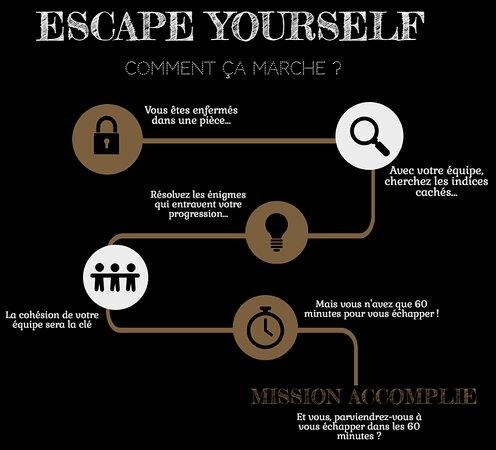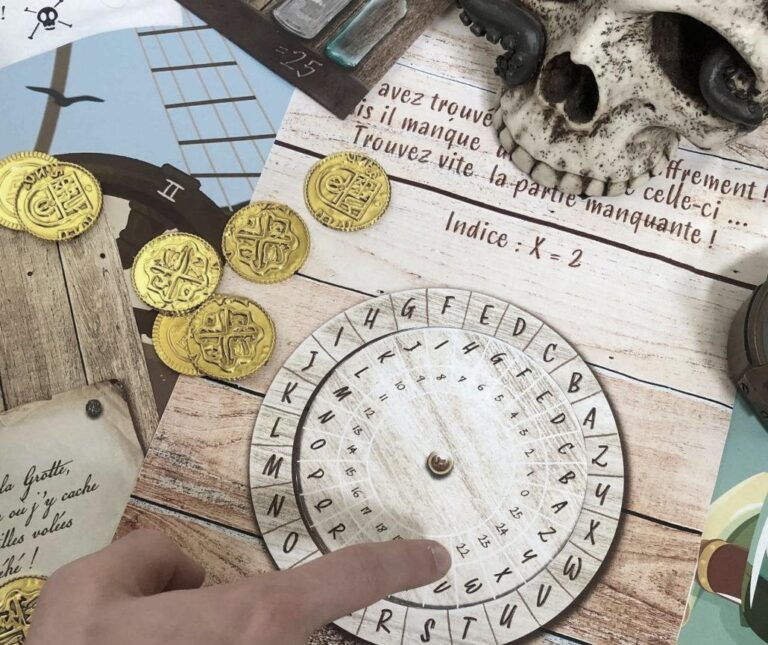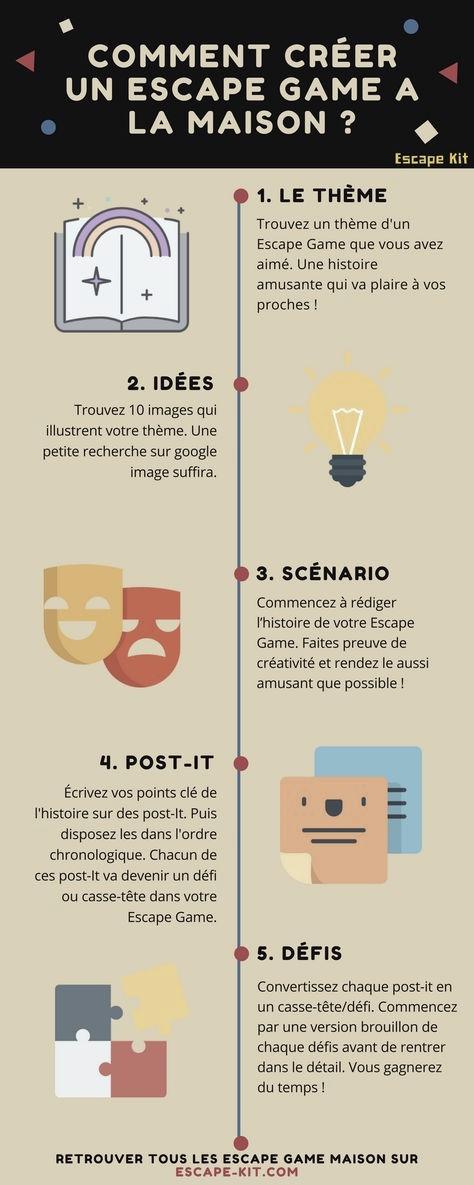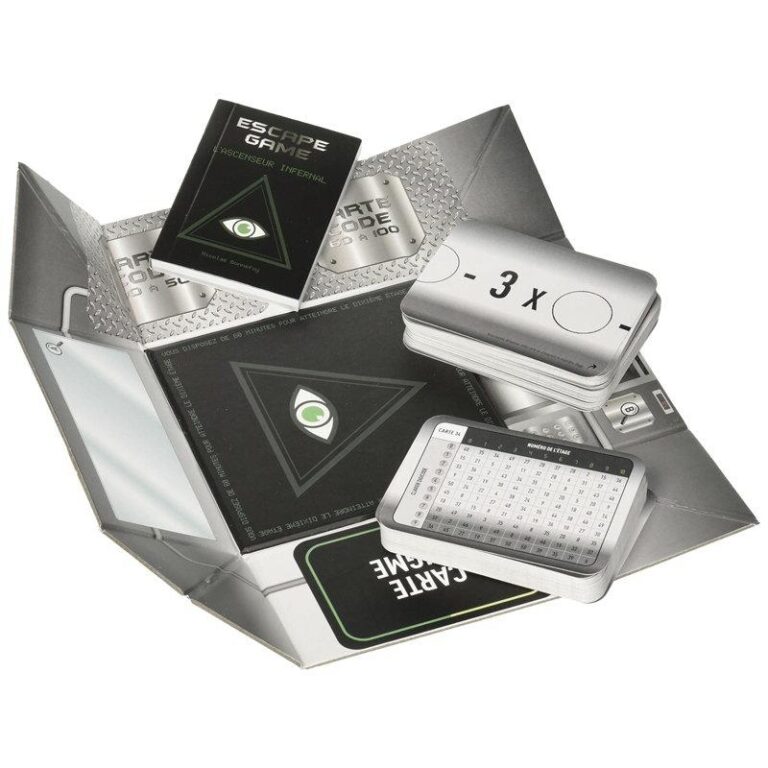Comment organiser et gérer un Escape Game : conseils et astuces
The concept of Escape Games
An Escape Game, also known as an Escape Room, is a popular interactive activity where participants are immersed in a themed environment and must solve a series of puzzles and challenges to escape within a given time limit. These games have gained immense popularity over the years, providing a thrilling and challenging experience for players of all ages.
The concept of Escape Games originated from point-and-click video games and was later adapted into physical real-life experiences. The objective is to encourage teamwork, problem-solving, critical thinking, and creativity among the participants.
Escape Games typically consist of a themed room or scenario, where players must uncover clues, solve puzzles, unlock locks, and unravel the mystery to ultimately find the key or combination that will lead to their escape.
The recipe for an Escape Game
Creating an Escape Game involves several key elements to ensure an engaging and immersive experience:
- Themed Environment: Choose a captivating theme or storyline that sets the tone for the game. This could be anything from a haunted mansion to a space station.
- Puzzles and Challenges: Design a variety of puzzles and challenges that require participants to think outside the box and work together. Incorporate different types of puzzles, such as riddles, math problems, and mechanical puzzles.
- Props and Decorations: Use props, decorations, and immersive elements to enhance the atmosphere and make players feel like they are part of the story. This could include hidden compartments, secret passages, or interactive objects.
- Time Limit: Set a time limit for the game to create a sense of urgency and keep the participants engaged. Typically, escape rooms offer a time limit of 60 minutes.
- Game Master: Have a game master who monitors the game, provides hints when needed, and ensures the smooth running of the experience.
7 good reasons to create an Educational Escape Game
Integrating Escape Games into an educational setting can be highly beneficial for both students and teachers. Here are seven good reasons to create an Educational Escape Game:
- Engages and Motivates: Escape Games provide an interactive and immersive learning experience that boosts student engagement and motivation.
- Encourages Critical Thinking: The puzzles and challenges in Escape Games require students to think critically, solve problems, and apply their knowledge in a practical context.
- Promotes Collaboration: Escape Games foster teamwork and collaboration as students must work together to solve the puzzles and escape the room.
- Develops Communication Skills: Students need to effectively communicate and share ideas to progress in an Escape Game, improving their communication and interpersonal skills.
- Enhances Creativity: Designing an Escape Game involves creativity in creating engaging puzzles and scenarios, allowing students to unleash their creative potential.
- Offers Differentiated Learning: Escape Games can be designed to cater to different learning styles and abilities, providing a personalized learning experience for each student.
- Makes Learning Fun: By gamifying the learning process, Escape Games make education enjoyable and memorable for students.
How to adapt an Escape Game in class?
Adapting an Escape Game for classroom use requires careful planning and consideration. Here are some steps to follow:
- Define Learning Objectives: Identify the specific educational outcomes you want to achieve through the Escape Game.
- Select a Theme: Choose a theme that aligns with the curriculum and engages the students.
- Create Puzzles and Challenges: Design puzzles and challenges that are relevant to the learning objectives and age-appropriate for the students.
- Prepare Materials: Gather the necessary props, clues, and materials required for the game.
- Set Up the Room: Transform the classroom into an immersive environment, incorporating decorations and props related to the theme.
- Explain the Game Rules: Brief the students on the rules, objectives, and limitations of the Escape Game.
- Facilitate the Game: Act as a facilitator, observing the students’ progress, providing hints when needed, and ensuring a smooth flow of the game.
- Debrief and Reflect: After the game, facilitate a discussion to reflect on the learning experience and connect it to the curriculum.
Write your Escape Game scenario in 9 steps
Writing a compelling Escape Game scenario involves the following steps:
- Choose a Theme: Select an exciting theme or storyline that captures the players’ interest.
- Outline the Plot: Develop a captivating plot with a clear objective for the players to achieve.
- Create Clues and Puzzles: Design a series of clues and puzzles that are interconnected and lead players closer to the final solution.
- Design the Flow: Plan the sequence of puzzle-solving and clue discovery to ensure a logical and engaging gameplay experience.
- Balance Difficulty: Adjust the difficulty level of the puzzles to cater to the target audience, ensuring a challenging yet achievable game.
- Integrate Props and Decorations: Incorporate props, decorations, and interactive elements that enhance the immersive experience.
- Consider Technology: Explore the use of technology, such as QR codes or hidden messages in digital formats, to add an extra layer of complexity.
- Test and Refine: Test the scenario with a group of players to identify any issues or areas for improvement and make necessary adjustments.
- Finalize and Document: Once the scenario is refined, document it in a clear and organized manner for easy implementation.
Some ideas to create puzzles in your Educational Escape Game
Creating puzzles for an Educational Escape Game requires creativity and alignment with the learning objectives. Here are some ideas for puzzle creation:
- Riddles: Design riddles that require students to think critically and use their problem-solving skills to find the solution.
- Multimedia Puzzles: Integrate multimedia elements such as images, videos, or audio recordings as clues or hints.
- Mathematical Challenges: Incorporate math problems, equations, or number sequences that students need to solve to progress in the game.
- Word Games: Create word puzzles, anagrams, or crosswords that enhance vocabulary and language skills.
- Logical Reasoning: Develop puzzles that require logical reasoning and deduction, such as arranging a sequence of events or determining patterns.
Useful items to create an Educational Escape Game
When creating an Educational Escape Game, consider incorporating the following useful items:
- Locks and Keys: Use combination locks, padlocks, or key locks to secure containers or doors that contain clues or puzzles.
- Hidden Compartments: Create hidden compartments or secret compartments within props or furniture to hide clues or objects.
- Ciphers and Codes: Utilize various ciphers and codes, such as Caesar ciphers or Morse code, to encrypt messages that players need to decipher.
- Manipulative Puzzles: Provide mechanical puzzles, such as jigsaw puzzles or Rubik’s cubes, that players must solve to unlock or reveal hidden information.
- Interactive Technology: Incorporate technology, such as tablets or smartphones, to enhance the gameplay experience with augmented reality or interactive apps.
Our tips to succeed your Educational Escape Game
To ensure the success of your Educational Escape Game, keep the following tips in mind:
- Align with Curriculum: Ensure that the game is aligned with the curriculum and supports the learning objectives.
- Consider Student Abilities: Adapt the difficulty level and complexity of the puzzles to suit the abilities of the target audience.
- Provide Clear Instructions: Clearly communicate the rules, objectives, and expectations to the players before starting the game.
- Offer Hints and Guidance: Incorporate a hint system to assist players who may be struggling with certain puzzles or challenges.
- Encourage Collaboration: Emphasize the importance of teamwork and collaboration among the players to solve the challenges.
- Prioritize Safety: Ensure the game environment is safe and free from any hazards or potential risks.
- Reflect and Evaluate: After the game, gather feedback from participants and evaluate the effectiveness of the learning experience.
The top 4 favourite Escape Games of the editorial staff
The editorial staff has compiled a list of their top 4 favourite Escape Games:
- « Mystery Mansion Escape » – This game takes players on a thrilling adventure through a haunted mansion, filled with cryptic puzzles and hidden secrets.
- « Lost in Space » – Participants are stranded on a malfunctioning spaceship and must solve a series of science-based puzzles to repair the ship and return safely to Earth.
- « Time Traveler’s Quest » – Players travel through different periods in history, solving historical puzzles and challenges to prevent a disastrous event from happening.
- « Museum Heist » – In this game, players must infiltrate a high-security museum and steal a valuable artifact by solving intricate puzzles and outsmarting the security system.
These Escape Games offer thrilling and immersive experiences that keep players engaged and entertained while also promoting critical thinking and problem-solving skills. Whether in educational settings or leisurely activities, Escape Games continue to captivate audiences worldwide with their unique blend of adventure and puzzles.
Les prochaines étapes:
Now that you have a better understanding of how to manage an Escape Game and adapt it for educational purposes, you can start brainstorming ideas and creating your own captivating scenarios. Remember to align the game with the learning objectives, provide clear instructions, and foster collaboration among the participants. With creativity and attention to detail, you can create a memorable and engaging Escape Game experience.
FAQ
Comment bien organiser un escape game ?
Pour bien organiser un escape game, il faut d’abord choisir un thème captivant puis créer des énigmes cohérentes avec la narration et le thème. Assurez-vous que le lieu est correctement aménagé selon le scénario et faites des tests avant le jour J pour garantir que le jeu se déroule sans accroc.
Est-ce rentable de faire un escape game ?
La rentabilité d’un escape game dépend de plusieurs facteurs tels que l’emplacement, la qualité du jeu, le coût de l’entretien et le prix du ticket. Si ces facteurs sont bien gérés, cela peut être rentable. Toutefois, il faut une bonne étude de marché avant de se lancer.
Comment travailler dans un escape game ?
Pour travailler dans un escape game, vous devez d’abord avoir une passion pour les jeux et les énigmes. Vous aurez également besoin de compétences en service client, car vous serez souvent amené à interagir avec les joueurs. De plus, certaines compétences en scénographie, en conception de jeu ou en technologie peuvent être utiles.
Comment créer des énigmes escape game ?
Pour créer des énigmes escape game, il faut définir une histoire captivante et un objectif. Ensuite, créez un ensemble de casse-têtes logiques, de défis physiques et de puzzles qui correspondent à l’histoire et qui doivent être résolus pour atteindre l’objectif. Veillez à ce que toutes les énigmes soient interconnectées et conduisent à une solution finale.




